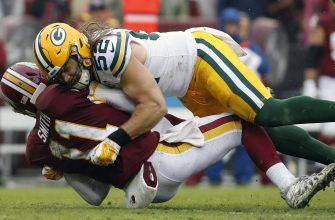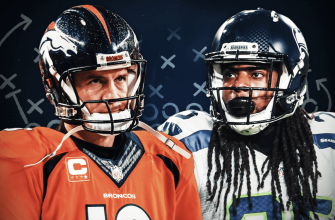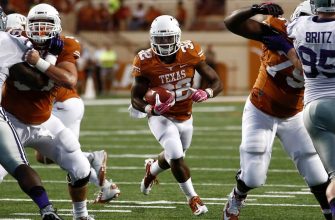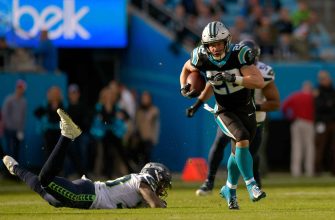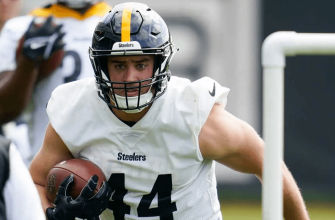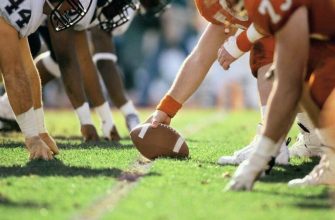To understand the Tackle Box in football and its purpose, delve into the sub-sections of this introduction. Explore the definition of the Tackle Box, which is crucial in football strategies and formations.
Definition of the Tackle Box in Football
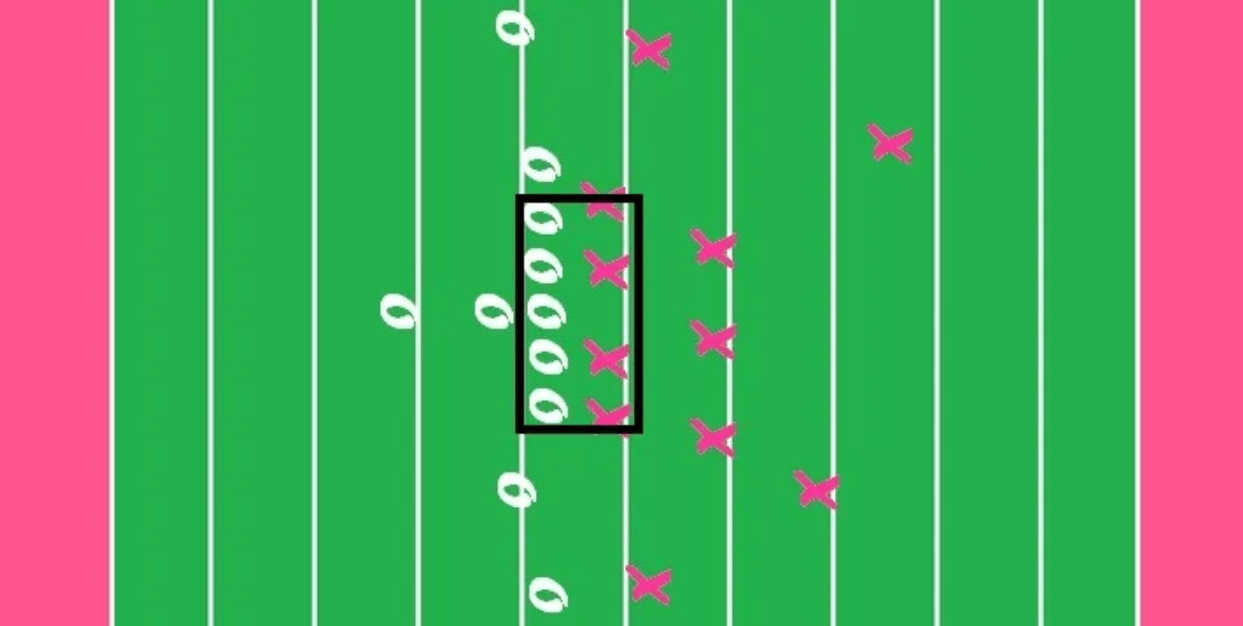
What is a Tackle Box? It’s a zone on the football field between the two offensive tackles, where offensive linemen are positioned. It’s an essential area that determines the legality of certain plays. Offensive players are safe from being hit after a forward pass is thrown.
Quarterbacks get extra time to make their throws without interference from defenders. The tackle box sets boundaries for defenders, preventing unnecessary roughness and ensuring player safety. It also impacts intentional grounding penalties if QBs throw the ball outside it when under pressure.
Rules protect both the passer and defensive players. Offensive linemen have clear boundaries when blocking, and defenders must be careful when tackling or sacking the quarterback. These regulations keep the game fair and balanced between offense and defense.
Historically, there were no formal rules or guidelines about protective spaces for QBs, leading to controversy over disruptive hits. As player safety became more important, regulations were made to make the game safer.
The Tackle Box concept reduces injuries caused by late or excessive hits on QBs after they release passes. This shows how football adapts to guarantee competitiveness and player well-being. The Tackle Box evolution is a reminder of how football always strives for improvement.
Importance of the Tackle Box
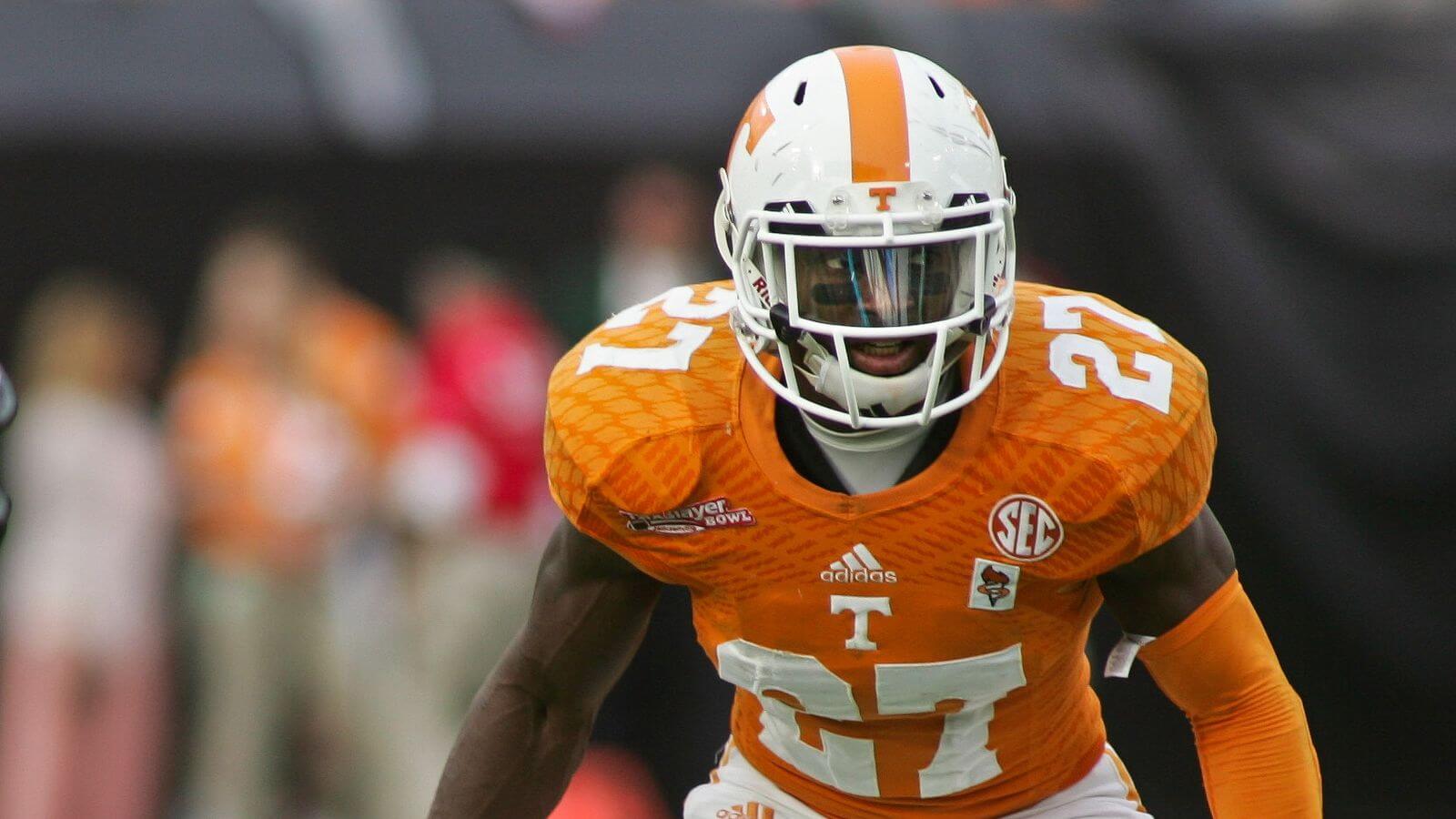
To better understand the importance of the tackle box in football, delve into its role in defensive strategies and its impact on offensive formations. Explore how the tackle box influences defensive tactics and how it shapes the offensive game plan. Uncover the strategic significance of this critical area on the football field.
Role of the Tackle Box in defensive strategies
The tackle box has a vital role in defensive strategies, providing a systematic and organized approach. It serves as a tool for containing opponents and stopping them from advancing. It offers a designated area on the pitch for defenders to execute their plans efficiently.
Let us explore its components and functions:
- Gap Assignments – Defenders get specific gaps to cover, so opponents can’t exploit open spaces.
- Gap Control – Defenders keep control of assigned gaps, limiting the offensive team’s yardage gains.
- Run Defense – Defenders can swarm ball carriers fast, reducing their gains and forcing turnovers.
- Pass Coverage – Positioning defenders in the tackle box blocks passing lanes, making it harder for quarterbacks to find receivers.
It’s also essential to note that the tackle box needs constant communication between defenders. This ensures that defensive strategies are executed in unison, and ready to adapt to the ever-changing game.
Impact of the Tackle Box on offensive formations
The Tackle Box has a huge influence on offensive formations. It’s key in deciding the game’s flow and success of a play.
Let’s take a look at some factors that affect it:
- Players positioning: The Tackle Box affects how players line up on both sides of the ball. Offensive linemen use it to form a barrier which defensive players have to break through to get to the quarterback or disrupt running plays.
- Formation options: The width and depth of the Tackle Box decide the range of formations available to an offense. It affects decisions such as using a spread offense or a power formation.
- Defensive response: Defenders inside the Tackle Box directly influence the offense’s strategy. If they pack the area, the offense can adjust by making quick passes or runs.
- Run blocking lanes: The Tackle Box majorly impacts run blocking schemes. Offensive linemen must use it to create effective running lanes for ball carriers.
To optimize the impact of the Tackle Box, here are some tips:
- Adjust pre-snap reads: Quarterbacks should assess defenders’ positions before a play. By spotting gaps and vulnerabilities, they can make swift decisions and exploit defensive weaknesses.
- Utilize motion plays: Sliding receivers or running backs can give defensive players within the Tackle Box a hard time. This can lead to mismatches or coverage breakdowns.
- Incorporate misdirection plays: Fake handoffs or reverses within the Tackle Box can surprise defenders and give the offense an edge.
- Establish a balanced attack: Alternating between different formations within the Tackle Box keeps defenses guessing. It helps exploit any weaknesses in their defensive structure.
One rule to remember about the Tackle Box: Don’t bring it up during family picnics – it can kill the mood quickly!
Rules and Regulations Regarding the Tackle Box
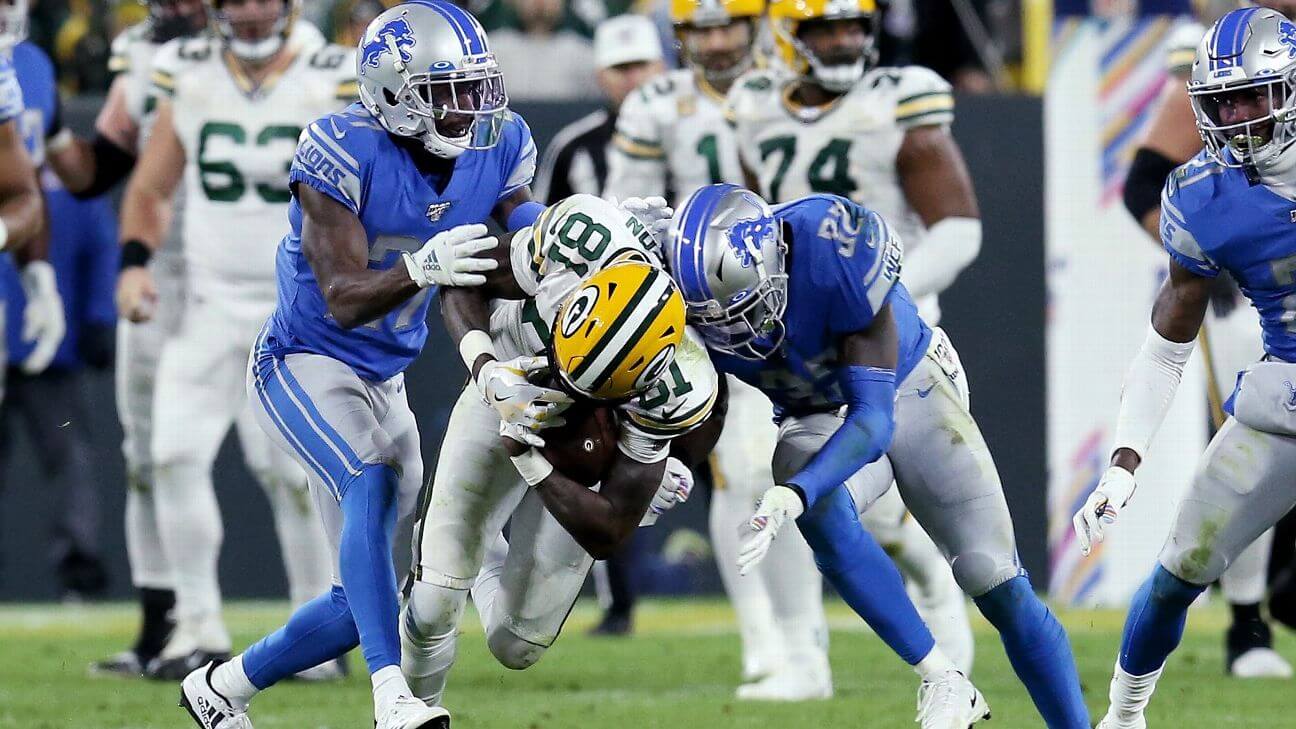
To understand the rules and regulations regarding the tackle box in football, dive into the dimensions and boundaries of the tackle box, as well as the legal actions and restrictions within it. Explore how these sub-sections provide solutions and guidelines for players within the tackle box.
Dimensions and boundaries of the Tackle Box
- Horizontal Boundaries: The tackle box extends from the outermost points of the offensive tackles’ positions on the line of scrimmage. This boundary ensures that the tackle box is directly aligned with the offensive formation.
- Vertical Boundaries: The tackle box extends forward and backward from the position where the quarterback lines up to take the snap. Typically, this means the tackle box spans about 4-5 yards behind the line of scrimmage.
Legal Actions within the Tackle Box
Within the tackle box, certain actions are permitted, while others are restricted or prohibited:
Legal Actions
- Quarterbacks can throw passes to eligible receivers within the tackle box without the fear of being penalized for intentional grounding.
- Offensive linemen can engage with defensive players within the tackle box to protect the quarterback and create running lanes for ball carriers.
Restricted or Prohibited Actions
- Defensive players must avoid making forcible contact to the quarterback’s head or neck area within the tackle box.
- Defensive players cannot engage in “roughing the passer” by driving the quarterback to the ground with excessive force.
- Defensive players are not allowed to enter the tackle box before the ball is snapped, as this would constitute offside or encroachment penalties.
Understanding these rules and regulations regarding the tackle box in NFL football is vital for both players and referees. It ensures fair competition, player safety, and the smooth execution of plays within this critical area of the field. Football’s intricate rules, like those governing the tackle box, contribute to the complexity and excitement of the game that millions of fans enjoy each season.
Purpose of the Tackle Box
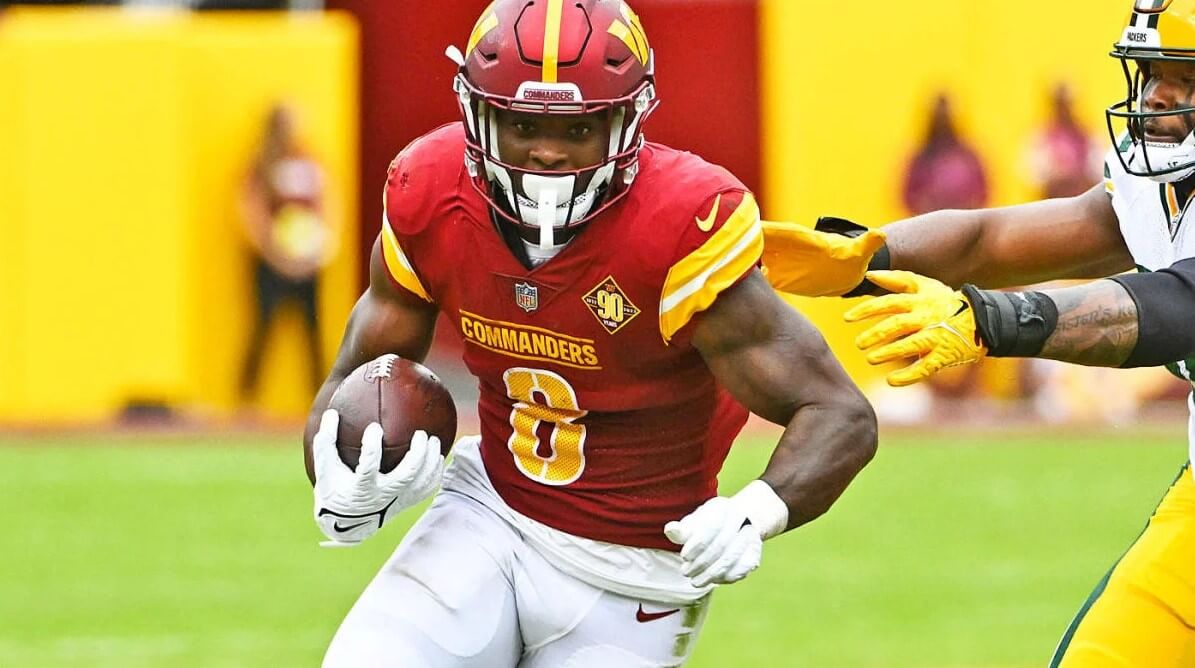
The tackle box serves several critical purposes in NFL football:
- Legal Passing Area: Inside the tackle box, the quarterback is protected by specific rules that prohibit defenders from engaging in certain actions, such as hitting the passer in the head or driving them into the ground. This protection helps maintain the integrity of the passing game.
- Avoiding Intentional Grounding: The tackle box plays a role in determining whether a quarterback’s pass is considered “intentional grounding.” If the quarterback throws the ball away to avoid a sack while inside the tackle box, it is generally not considered intentional grounding, as long as the pass crosses the line of scrimmage.
- Preventing Defensive Encroachment: Defensive players are not allowed to encroach into the tackle box before the ball is snapped. This rule helps ensure that the offense has a fair opportunity to execute their play without interference from the defense.
Strategies and Techniques for Effective Utilization of the Tackle Box
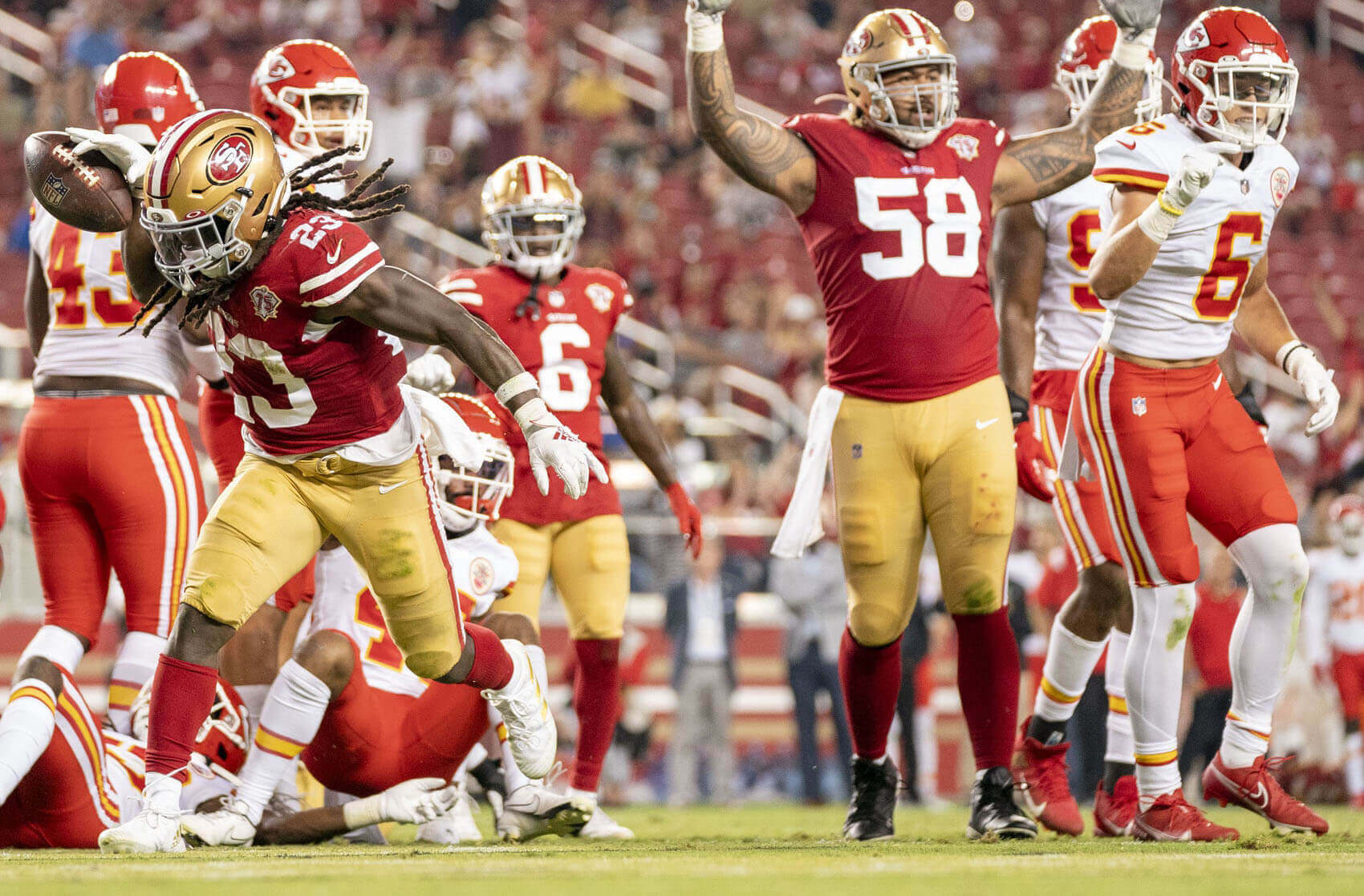
To effectively utilize the tackle box in football, you need to understand the strategies and techniques involved. Control the tackle box from a defensive standpoint by implementing specific strategies. On the offensive side, learn how to exploit the tackle box with strategic tactics. Discover the key elements for success in both defensive and offensive approaches to the tackle box.
Defensive Strategies for Controlling the Tackle Box
Controlling the tackle box from a defensive standpoint is crucial for disrupting the opposing team’s plays and protecting your quarterback.
Here are some key defensive strategies to achieve this:
- Pass Rush Techniques: Defensive linemen should utilize various pass rush techniques within the tackle box. Speed rushes, bull rushes, and swim moves can be effective in putting pressure on the quarterback while staying within the legal boundaries of the tackle box.
- Stunts and Blitzes: Incorporating stunts and blitzes within the tackle box can create confusion for the offensive linemen. Defensive players can switch positions or attack from unexpected angles, making it challenging for the offense to protect the quarterback effectively.
- Coverage Schemes: Defensive backs and linebackers should work in tandem to provide tight coverage on receivers within the tackle box. This can disrupt the timing of short and intermediate passing routes, forcing the quarterback to hold onto the ball longer.
- Defending Run Plays: When defending against run plays within the tackle box, defensive linemen and linebackers must maintain gap discipline. By plugging running lanes and maintaining proper containment, they can limit the effectiveness of running backs and prevent big gains.
- Tackling Fundamentals: Effective tackling is crucial within the tackle box. Defensive players must wrap up ball carriers securely, preventing yards after contact. Solid tackling limits the offense’s ability to gain additional yardage.
Offensive Tactics for Exploiting the Tackle Box
On the offensive side of the ball, teams can strategically exploit the tackle box to gain an advantage:
- Quick Passing Game: Quarterbacks can utilize quick release passes within the tackle box to neutralize the pass rush. Short passes to slot receivers, tight ends, or running backs can move the chains while keeping the defense off balance.
- Screen Plays: Screen passes are effective within the tackle box, as they allow linemen to release into the open field to block for the receiver. Well-executed screen plays can catch the defense off guard and result in substantial gains.
- Play-Action: Employing play-action passes can freeze linebackers and safeties within the tackle box, creating opportunities for deep throws to wide receivers running downfield. This tactic capitalizes on the defense’s commitment to stopping the run.
- Utilizing Tight Ends: Tight ends often line up within the tackle box and can be valuable assets in both the passing and running game. They can serve as security blankets for quarterbacks and provide additional blocking support for running plays.
- Exploiting Mismatches: Identify favorable matchups within the tackle box. If a speedy receiver is matched up against a slower linebacker, exploit that advantage with designed plays to target the mismatch.
Frequently Asked Questions
Q: What is a tackle box in football?
A: A tackle box is an area on the football field between the offensive tackles on either side of the center.
Q: Why is the tackle box important?
A: The tackle box is important because it provides protection for the quarterback. If the quarterback is inside the tackle box, defenders are not allowed to hit him with a helmet-to-helmet or shoulder-to-helmet hit.
Q: What happens if a defender hits the quarterback inside the tackle box?
A: If a defender hits the quarterback inside the tackle box with a helmet-to-helmet or shoulder-to-helmet hit, they will receive a penalty for roughing the passer.
Q: Are there any restrictions on offensive players in the tackle box?
A: No, there are no restrictions on offensive players in the tackle box. They can block and receive passes as they would anywhere else on the field.
Q: Can a quarterback leave the tackle box during a play?
A: Yes, a quarterback can leave the tackle box during a play. If they do, they are no longer protected by the tackle box rule and can be legally hit by defenders.
Q: Is the tackle box the same in high school, college, and professional football?
A: While the basic concept of the tackle box is the same across all levels of football, the dimensions and specific rules may differ slightly between high school, college, and professional football.
Conclusion
Effectively utilizing the tackle box in football requires a deep understanding of both defensive and offensive strategies and techniques. Defensive players must employ pass rush skills, coverage schemes, and disciplined run defense to control the tackle box. On the offensive side, quarterbacks and play-callers can exploit the tackle box with quick passes, screens, play-action, and by recognizing and capitalizing on favorable matchups. Mastering the tackle box is a key component of achieving success on the football field, where strategic execution can make all the difference.


